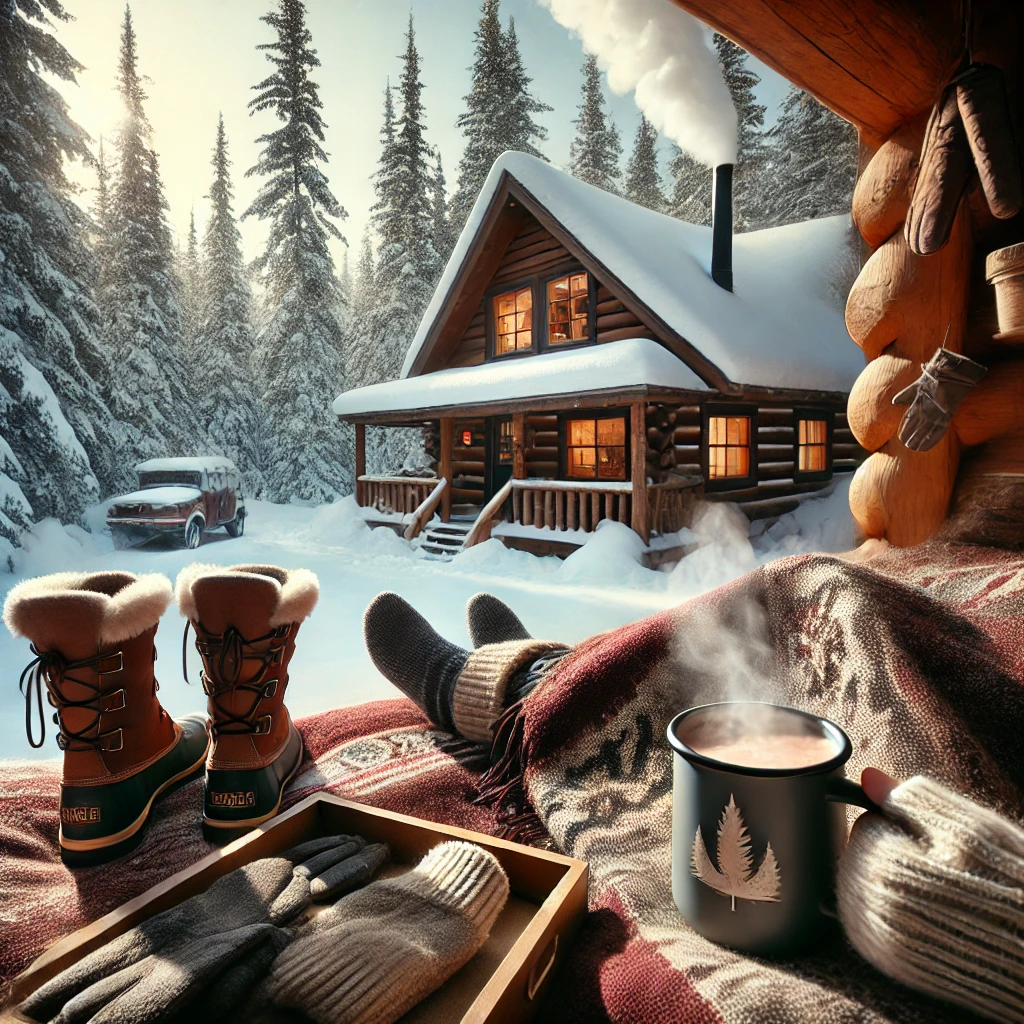Table of Contents
Introduction
As the winter months approach, the importance of home maintenance reaches an all-time high. The cold weather brings a variety of challenges that can cause significant damage to your property if left unaddressed. From frozen pipes to roof damage, the harsh conditions of winter can lead to costly repairs and undue stress. Furthermore, neglecting essential maintenance tasks can result in higher energy bills as your heating system works overtime to compensate for inefficiencies.
Proper winter maintenance is not just a matter of preserving comfort; it is vital for ensuring the safety and integrity of your home. For instance, failing to insulate pipes appropriately can lead to bursts that may flood your home, causing extensive water damage. Similarly, a poorly maintained roof may succumb to the weight of accumulated snow or leak as ice dams form. These issues highlight the crucial role winter preparation plays in safeguarding your house against seasonal threats.

Beyond protecting against damage, efficient winter upkeep can also enhance your home’s overall energy efficiency. By sealing gaps and servicing heating systems, you can maintain a consistent indoor temperature, reducing energy consumption and lowering utility bills. In sum, investing time and effort into winter home maintenance is a wise decision, ensuring your living space remains safe, comfortable, and efficient throughout the season.
Inspecting and Sealing Windows and Doors
As winter approaches, ensuring that your home is adequately protected against the chilly air becomes paramount. One of the primary areas to address is the inspection and sealing of windows and doors. Air leaks through these points can lead to significant heat loss, making your heating system work harder and increasing your energy bills. Therefore, a thorough inspection can help maintain a cozy indoor environment while optimizing energy efficiency.
Begin by checking for air leaks around your windows and doors. A straightforward method involves using a candle flame. Simply light a candle and move it slowly around the edges of the window or door frame. If the flame flickers, it indicates the presence of a draft. For a more precise analysis, consider using a thermal leak detector, which can highlight areas with temperature differentials, indicating where cold air enters your home.
Once you’ve identified the leaks, it’s time to seal them. Weatherstripping is an effective solution for sealing gaps around movable components such as doors and operable windows. There are various types of weatherstripping materials available, including foam tape, felt, and V-strip. Measure the length of the gap you need to seal, cut the weatherstripping to size, and apply it according to the product’s instructions.
For stationary components like window panes or the frame around a door, caulk is an excellent choice. Silicone-based caulk is particularly durable and flexible, making it suitable for both interior and exterior applications. Before applying the caulk, clean the area to ensure proper adhesion. Cut the nozzle of the caulk tube to the desired width, then apply a steady bead along the gap. Smooth it with a caulk smoothing tool or your finger for a neat finish.
By diligently inspecting and sealing your windows and doors, you can significantly reduce drafts, retain warmth, and curtail your heating expenses during the winter months. This simple yet effective maintenance task plays a crucial role in ensuring your home remains comfortable and energy-efficient throughout the cold season.
Checking Your Heating System
To ensure your home remains warm and safe during the winter months, it is imperative to inspect and service your heating system regularly. Whether you have a furnace, heat pump, or boiler, proper maintenance can help avoid unexpected breakdowns and ensure efficient operation throughout the cold season.
First and foremost, replace or clean the filters in your heating system. Dirty filters can obstruct airflow, reducing the system’s efficiency and potentially causing damage. For furnaces, it’s advisable to check and change filters every month during peak use. Heat pumps typically require filter checks every three months, while boiler systems benefit from periodic cleaning of inlet filters.
Beyond filters, it’s crucial to check for carbon monoxide leaks, especially in systems like gas furnaces and boilers. Carbon monoxide is a colorless, odorless gas that can be deadly if not detected. Ensure your home is equipped with functional carbon monoxide detectors, and inspect the vents and flues for any blockages or leaks.
Professional maintenance is another essential aspect of winter readiness. Schedule an annual service for your heating system where a qualified technician will conduct a thorough inspection, cleaning, and any necessary repairs. This professional evaluation helps identify and resolve potential issues before they escalate, ensuring optimal performance and safety.
For homeowners utilizing space heaters, safety should be a top priority. Space heaters should be placed on a flat, solid surface and kept at least three feet away from anything flammable, such as curtains, furniture, or bedding. Always turn off the heaters when leaving a room or going to bed, and avoid using extension cords to minimize fire hazards. Adhering to these guidelines ensures that your additional heating sources are both efficient and safe.
By diligently checking and maintaining your heating system, you can keep your home comfortable and secure, effectively surviving the winter while also maximizing energy efficiency.
One often overlooked aspect of winter home maintenance is the cleaning and maintaining of gutters. Clean gutters are critical during the winter months as they prevent ice dams from forming and causing potential damage to your roof. When leaves, twigs, and other debris clog up your gutters, water can overflow and freeze, creating ice dams. These dams can force water under your roof shingles, leading to leaks, mold, and even structural damage.
To prepare your gutters for winter, start by safely removing any debris. Utilizing a sturdy ladder, gloves, and a gutter scoop, carefully clear out leaves and other buildup. It’s essential to exercise caution during this process, especially if your roof is high or steep. For those uncomfortable with heights, hiring a professional can be a wise investment.
After removing debris, check for proper drainage by running water through the gutters using a garden hose. Ensure that water flows smoothly and is channeled away from the house. Pay special attention to downspouts; clear any blockages and inspect them to ensure they direct water at least 10 feet away from your foundation to prevent potential flooding or basement moisture issues.
Another proactive step is installing gutter guards. These guards can significantly reduce the amount of debris that enters your gutters, minimizing the maintenance required throughout the winter. Several types of gutter guards are available, including mesh screens, foam inserts, and surface-tension models, each designed to keep leaves and debris out while allowing water to flow freely.
Gutter maintenance is an essential component of winter preparation. Neglecting it can result in costly repairs and significant inconvenience. By ensuring your gutters are clean, drains properly, and using guards where necessary, you can safeguard your home against the hazards brought about by the winter season.
Protecting Pipes from Freezing
One of the foremost challenges during the winter months is preventing pipes from freezing. Proper insulation of exposed pipes is a crucial step towards avoiding costly and inconvenient repairs. Insulate pipes in unheated areas such as basements, attics, and crawl spaces using foam rubber or fiberglass sleeves. Make sure to cover all parts of the pipe to maintain a steady temperature and prevent freezing.
Another effective measure is to seal gaps and cracks in your home’s exterior walls and foundations. Caulk and weatherstrip can be used to block cold air from infiltrating and coming into contact with pipes. It’s also beneficial to keep a slow trickle of water flowing through faucets connected to exposed pipes, as running water is less likely to freeze. This simple measure can make a significant difference in cold temperatures.
Knowing the location of your main water shut-off valve is essential for winter maintenance. In the unfortunate event of a pipe burst, quickly shutting off the main water supply can significantly mitigate water damage. Ensure everyone in your household knows where this valve is located and how to operate it.
Outdoor hoses and faucets should not be neglected in your winter preparations. Disconnect and drain all garden hoses well before the first frost. Leaving them connected can cause water to back up into the plumbing pipes inside your home, which increases the risk of ruptures. Consider installing frost-proof spigots or using insulated faucet covers to protect outdoor faucets.
By following these preventive measures, you can reduce the chance of pipes freezing during the winter months. Effective insulation, sealing drafts, maintaining water flow, and managing outdoor plumbing components are essential steps in safeguarding your home against the chilly season’s adverse effects.
Roof Inspection and Maintenance
During the winter months, ensuring the integrity of your roof is paramount for maintaining a warm and safe home environment. An initial step entails a thorough inspection of your roof to identify any potential issues such as missing shingles, leaks, or structural damage. These problems can lead to significant complications if left unattended, such as water infiltration that can compromise the structural integrity of your home.
One of the key aspects of roof maintenance is cleaning. Leaves, branches, and other debris can accumulate on the roof and in the gutters, impeding water drainage and leading to potential water damage. It’s essential to remove any debris to prevent the formation of ice dams – ridges of ice that form at the edge of the roof and prevent melting snow from draining off properly. Ice dams can cause water to leak into your home, leading to damage of ceilings, walls, and insulation.
For homes situated in regions with heavy snowfall, it’s important to monitor the accumulation of snow on your roof. Excessive snow can place undue stress on the structure and increase the risk of roof collapse. Utilizing a roof rake to remove excess snow can be a beneficial practice to mitigate this risk.
While many homeowners can perform basic roof inspections and maintenance themselves, some issues may require the expertise of a professional. If you spot signs of significant damage such as extensive leaks, a large number of missing shingles, or structural weaknesses, it is advisable to contact a professional roofing contractor. Professional inspections not only ensure a more thorough assessment but also provide access to specialized repair services that can address more severe or complex issues efficiently.
Incorporating regular roof inspections and maintenance into your winter preparation routine is a proactive measure to safeguard your home against the harsh winter elements. Ensuring your roof is in optimal condition can provide you with peace of mind and contribute to the overall durability of your home structure through the cold season.
Chimney and Fireplace Safety
Maintaining a clean and functioning chimney and fireplace is crucial during the winter months, particularly for households that utilize wood-burning or gas fireplaces. Proper upkeep not only enhances the efficiency of your heating system but also significantly reduces the risk of hazardous situations such as chimney fires and carbon monoxide poisoning.
One of the initial steps in ensuring the safety of your fireplace is a thorough inspection. Visual inspections can identify obvious issues like blockages from bird nests, accumulated debris, or cracks in the chimney structure. However, a more detailed analysis by a professional is mandatory. Scheduling an annual professional inspection and cleaning service is highly recommended. These experts use specialized tools to remove soot, creosote buildup, and other residues from inside the chimney, preventing the dangerous conditions that can arise from neglect.
In addition to maintaining cleanliness, practical steps should be taken whenever the fireplace is in use. Ensure the flue is open before lighting a fire to allow smoke and gases to exit properly. This small action can prevent serious health hazards such as carbon monoxide poisoning. Keeping the area around the fireplace clear of flammable materials like furniture, rugs, and decorations is equally important. These items could easily catch fire if inadvertently exposed to sparks or embers.
Furthermore, only burn appropriate materials in your fireplace. Using seasoned hardwood rather than green or soft woods minimizes creosote buildup and results in a cleaner burn. For gas fireplaces, regular checks for gas leaks and ensuring the pilot light functions correctly cannot be overstated.
By implementing these chimney and fireplace safety measures, you can create a warmer, safer home environment during the harsh winter season. These practices not only protect your household but also contribute to the longevity and efficient operation of your heating system.
Emergency Preparedness for Winter Weather
Proper preparation for the winter season is crucial to ensure safety and comfort during severe weather conditions. One of the foundational steps in preparing for winter is assembling an emergency kit. This kit should include essential items such as blankets to keep warm, flashlights and extra batteries for illumination, non-perishable food items, and bottled water. In case of an extended power outage, these basic supplies can be life-saving.
A backup heat source is another critical component of winter emergency preparedness. Consider investing in a generator, which can keep essential appliances running when the power goes out. Alternatively, a wood stove can provide both heat and a means to cook food. Ensure that your backup heat source is installed correctly and that you have an adequate supply of fuel, such as firewood or propane.
Creating a family emergency plan is also essential. This plan should outline steps to take during a winter storm, including how to communicate if cell services are down and where to meet if your home becomes unsafe. Make sure all family members are familiar with the plan and conduct regular drills to reinforce this knowledge.
During a power outage, there are specific precautions you should follow to stay safe. Keep perishable food cold by minimizing the number of times you open the refrigerator and freezer. Use flashlights instead of candles to reduce the risk of fire. If you’re using a generator, place it outside to avoid carbon monoxide poisoning, ensuring that exhaust fumes do not enter your home. Additionally, insulate pipes to prevent freezing and bursting, and keep a supply of bottled water in case pipes do freeze.
By meticulously preparing for winter weather, you can significantly mitigate the risks associated with severe conditions. A well-stocked emergency kit, a backup heat source, an actionable family plan, and specific measures during a power outage are all pivotal steps in surviving the chill effectively and safely.
Conclusion
Surviving the chill of winter requires diligent preparation and proactive maintenance. By addressing essential tasks such as inspecting your heating system, sealing drafts, and ensuring proper insulation, you can mitigate potential issues that might otherwise lead to costly repairs. Equally important is the focus on exterior upkeep, including gutter cleaning and roof inspections, which help prevent damage from snow and ice build-up.
The importance of winter-proofing your home cannot be overstated. A warm and safe home during the colder months not only provides comfort but also safeguards against the unpredictable harshness of winter weather. Taking these preventive measures ensures your home’s longevity and efficiency while contributing to lower utility bills.
We encourage readers to take proactive steps before the winter season sets in. This foresight can save significant time, money, and frustration. For those seeking additional guidance, we have compiled comprehensive checklists and resources that detail all necessary maintenance activities. These tools can help ensure that no aspect of your home is overlooked as you prepare for the colder months ahead.
In summary, winter home maintenance is a crucial element in preserving the integrity and comfort of your living space. By adhering to the tips and steps outlined in this blog, homeowners can face winter with confidence, knowing they have taken the necessary precautions to protect their homes and loved ones.






